Sania Box, A Special Kind of DIY RPi4 Based Kit
The 13-year-old Sania Jain is a young entrepreneur, published writer and tech aficionado who now offers an embedded computer kit called Sania Box. The Raspberry Pi 4 based embedded system kit comes with an add-on board and has been designed to develop coding skills in anyone 8 years old or more, and for learning IoT, STEM, and for all kinds of DIY fun.
Background
Some DIY RPi-based kits can be found in our archives, such as the Piper Computer Kit 2 made for children’s education, but there’s now another option thanks to Sania Jain who has been designing, building, and writing in the STEM arena for some time.
Sania Jain’s accomplishments are amazing, and look to be just her beginning in STEM-based endeavors.
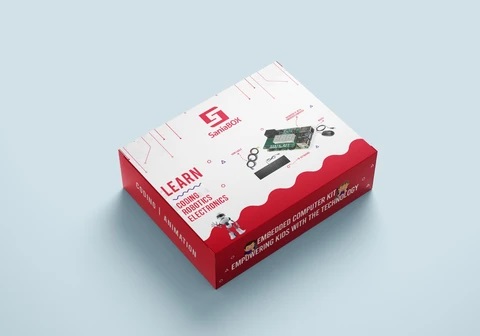
A Concept With Wide Reach
The Sania Box was conceived by Sania Jain and built by Moonshot Jr Inc, who is a bit mysterious but headquartered in Silicon Valley. The Kickstarter campaign has been somewhat popular and their goal is nearly reached as of this writing.
The Basics of Sania Box
The box works with either Raspberry Pi 4 or 3 SBC with an add-on board, that has a number of different optional attachment choices:
-
- Red and Green LED Lights
- Three-digit – 7 Segment Display
- Light Sensor
- Gas Sensor
- Thermal Sensor
- Touch Sensor
- Relay and Audio Buzzer
Safe and Fun
The add-on board is designed to be safe, and cable-free, where cable connections could be unsafe for children, Sania Box is safe for children and environmentally friendly.
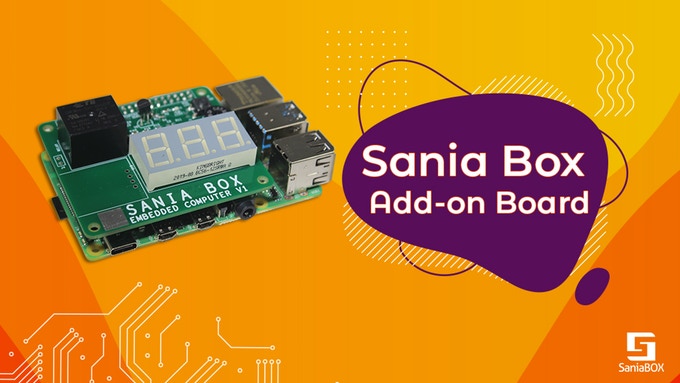
Sania Box and Python Education
The Sania Box relies on Python to teach programming. Python has been selected because it allows younger coders to learn more easily. The language choice is only recommended as Sania Box can use any language supported by the Raspberry Pi.
The Premise of Sania Box
Sania Box is an initiative meant to help children learn computer engineering and development, as well as coding, IoT, and electronics. The projects that can be built with the Sania Box are meant to be fun and educational and reach many layers of children’s lives, such as school, home, aftercare/enrichment centers, museums, and activity centers.
The price point of Sania Box shows it has been developed with accessibility in mind, and rather than building a profit margin, it aims to be a sustainable educational tool.
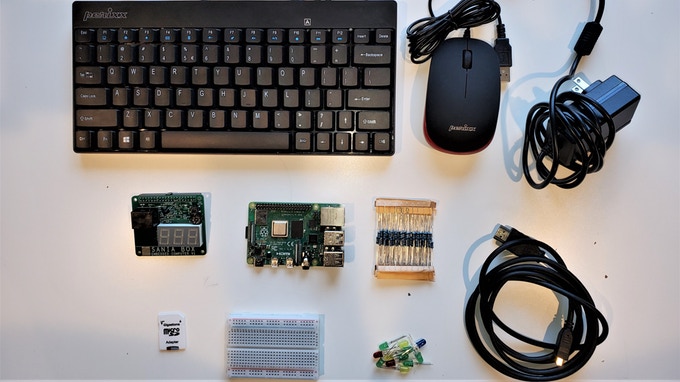
In the box
- Wired keyboard and mouse
- Custom Case
- USB-C Power supply
- 16 GB SD card with pre-loaded software to help you start programming out of the box
- HDMI cable to use a TV as your monitor
- A Raspberry Pi Model 4 with 1 GB Ram and 64-bit quad-core processor to power the add-on board
- The Sania Box embedded add-on board has the following features:
- 2 LEDs (Red and Green) that can blink, keep steady, and turn off
- Push Button
- Thermal Sensor
- Touch Sensor
- Three-digit, 7-segment clock display
- Relay Circuit
- Light Sensor
- Gas Sensor (CO2, methane, etc)
Just to refresh your memory
Raspberry Pi 4 specs
-
- CPU – Broadcom BCM2711, Quad-core Cortex-A72 (ARM v8) 64-bit SoC @ 1.5GHz.
- RAM – 1GB LPDDR4-2400 SDRAM
- WiFI – 2.4 GHz and 5.0 GHz IEEE 802.11ac wireless, Bluetooth 5.0 BLE.
- Ethernet – Gigabit.
- USB – 2x USB 3.0 ports; 2x USB 2.0 ports.
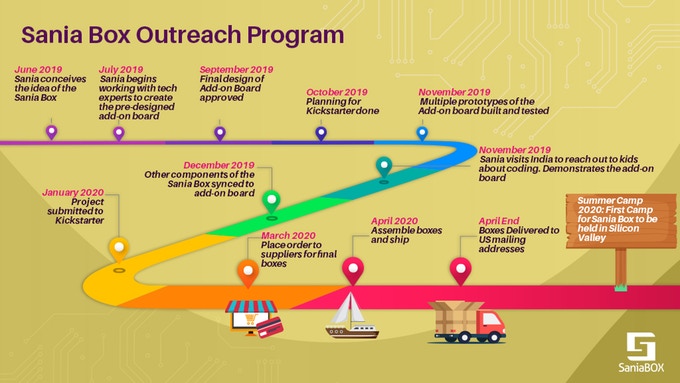
Pricing and Delivery
At this time there is a $149.00 basic level Coders Edition for everything included. There are other offers for $129.00 Pledge for the first 200 boxes, but the initiative is accepting donations for the program to inspire coding and STEM in general. The project can be found on Kickstarter and April 2020 is the proposed shipping date.

Stephen started writing about technology after publishing sci-fi short stories. His first White-Paper, written in 2008, was well received and inspired him to continue writing about technology. Today he writes in the technology space full time, covering a multitude of topics. During the time he wrote part-time he edited hundreds of titles for large publishers, in science and technology. He lives in Staten Island, with his wife and children.
Support CNX Software! Donate via cryptocurrencies, become a Patron on Patreon, or purchase goods on Amazon or Aliexpress


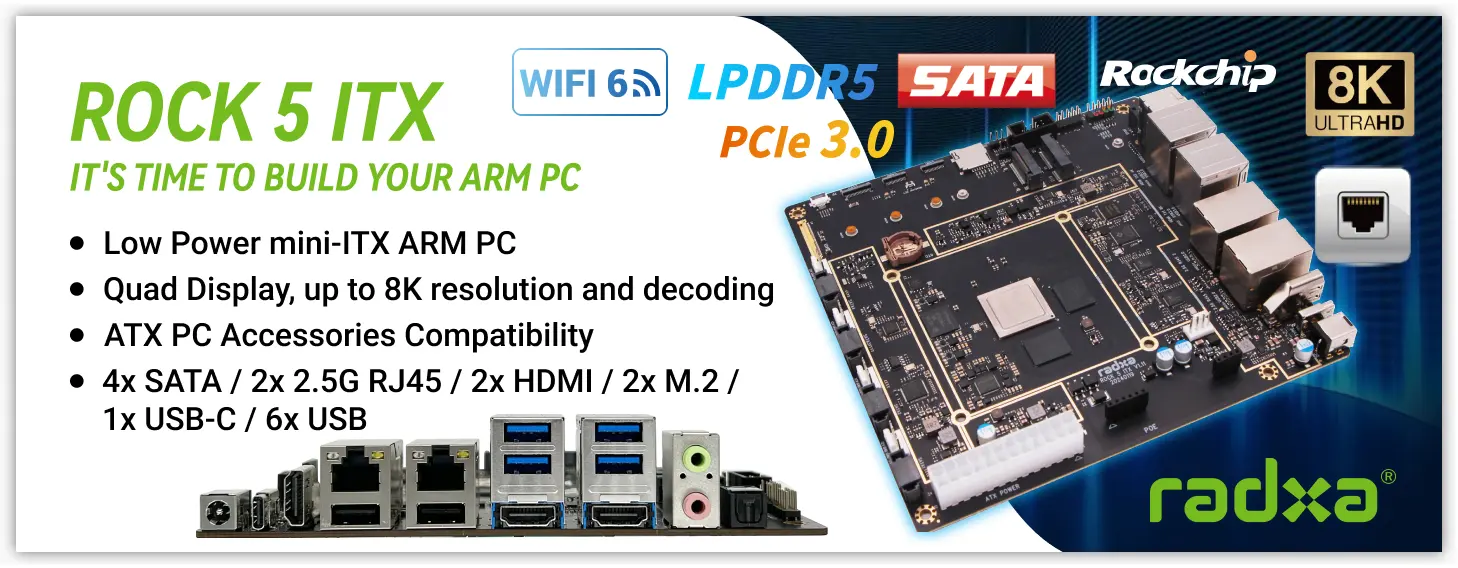


Overpriced raspberry pi add-ons which could be cheaper if bought alone and not from Kickstarter. Such as AliExpress. Also, Python is a really bad language. I hate Python
Hi Taem, You might get a few components at a cheaper price if bought individually. However, this kit is more than that. It includes a custom add-on board with some unique features such as push buttons, sensors, three digit-seven segment display, and relay circuit. The add-on board is one of the most important components of the kit and can be used to build innumerable projects involving code. The kit also includes pre-installed codes for beginners who want to learn and run them to explore several projects. Also, Python is one of the most fun and interactive coding languages. Experts say… Read more »
> hope you pursue and discover the benefits of coding with Python soon The benefit is easily reflected at the end of the month on your electricity provider’s stock and is well reflected on your power bill 🙁 And for the developers, it’s seen as spending time copy-pasting someone else’s code instead of thinking about yours. Object languages are quite complicated to grasp for kids and they impose some constraints (an python is unusable without google+stackoverflow to figure how to touch all the objects inherited from the libraries you’re using). When I was ~10 I showed my little brother (8… Read more »
Spectrum, Apple, Vic 20, Tandy, MX, C64, 0ric Atmos, Dragon,BBC B, Acorn Atom and Atari. Kids went from Basic to logo , C and Machine code. Forth tried but needs a more human interprator.
Playing games was the hook and launched many career and publishing house.
8 years and older……
99.9% of 8 years are trying to spell simple English, or finding the alphabet letters on that “strange” Qwerty keyboard layout.
Hello Antonym, We think you are underestimating 8-year-olds. You should see the projects that 8 year-olds are making with us. FYI, Moonshot Jr is an educational platform that encourages the creativity of kids above 7 and helps them to build projects based on their vision. Sania is one of our brightest members and she started coding when she was 8 herself. Kids are winning accolades when it comes to coding and it is a proven fact that younger kids are more responsive to computer languages and take it up as professions later in life if introduced to coding from an… Read more »
I second this. I started myself at 8. However some people are discouraged when they see kids not being receptive to computers. But computers do not transform kids, they just reveal those who were really made for this. That’s why it’s important to try to cover a broad spectrum of possibilities, in case something suddenly lights a spark in the kid’s head.
Looks like only 7 left at $129 as I write this message – so time to grab before price rises.